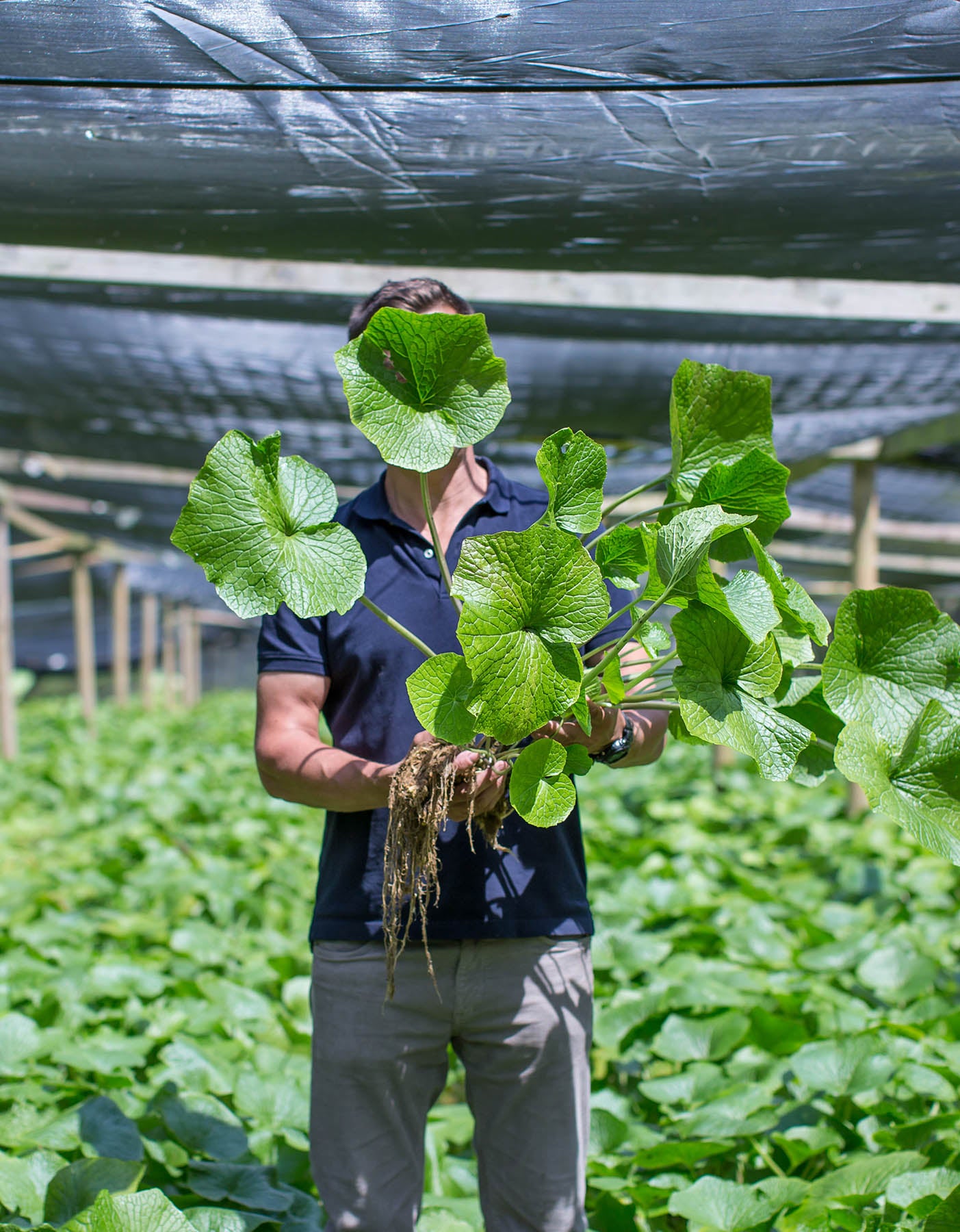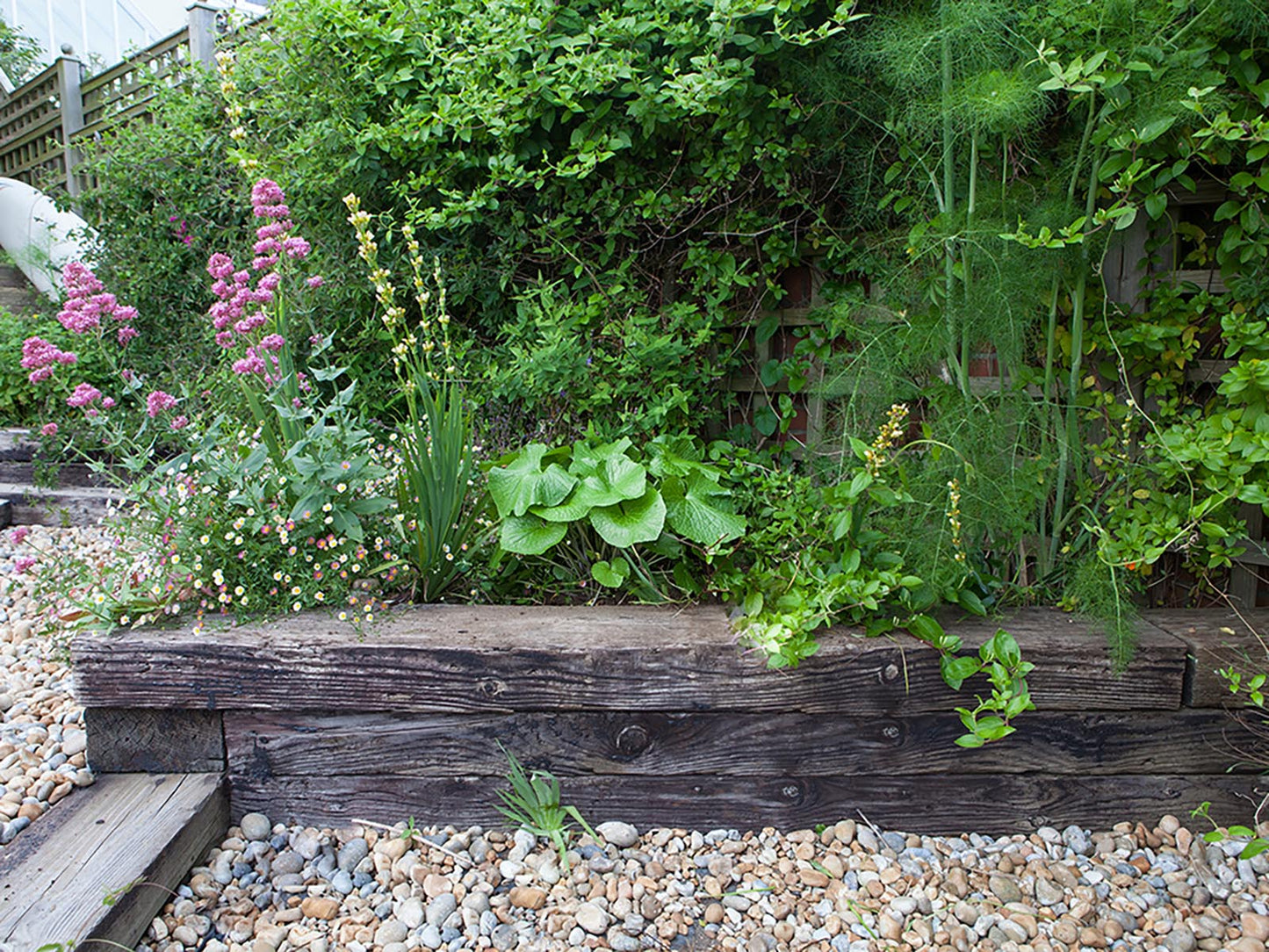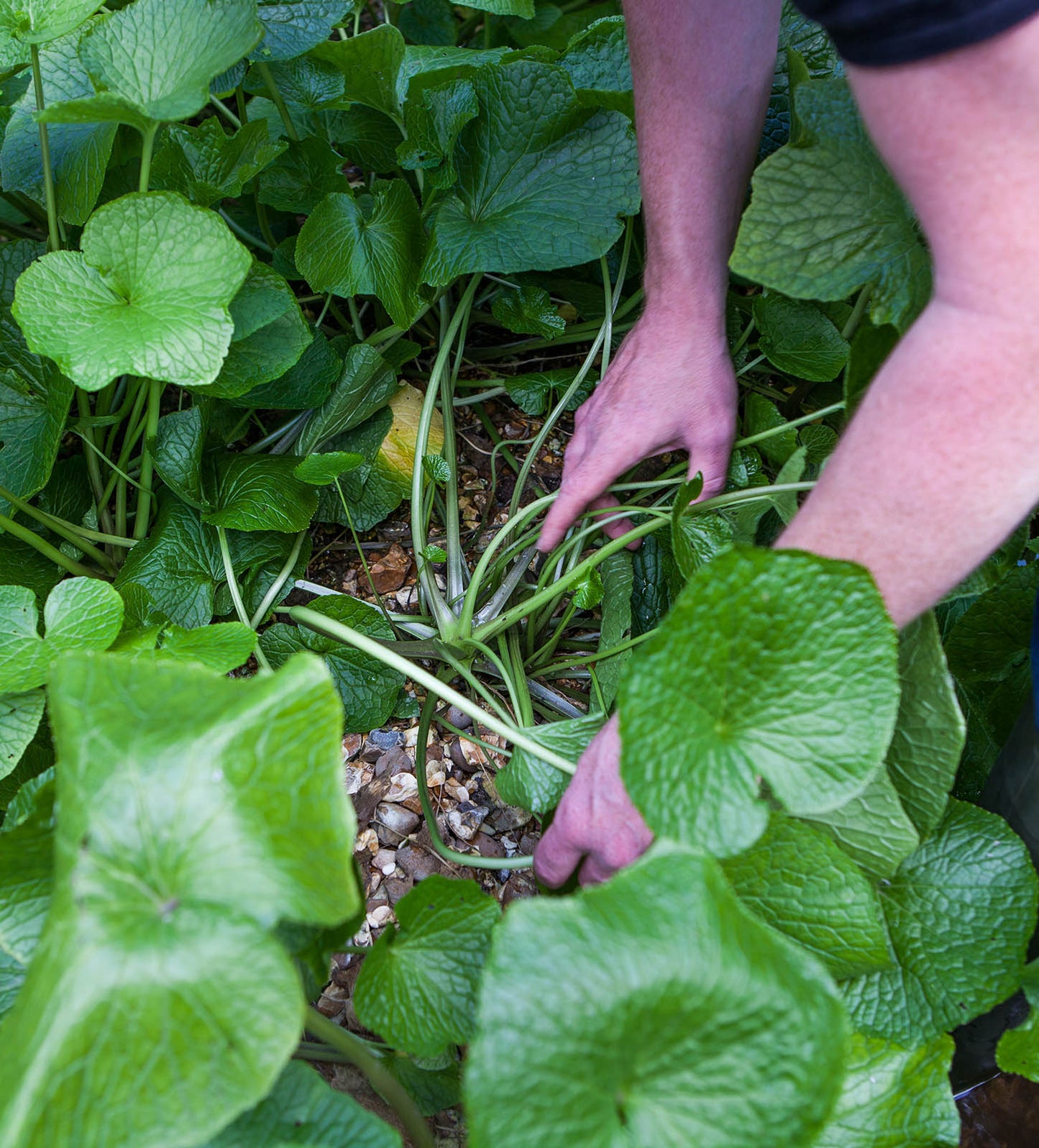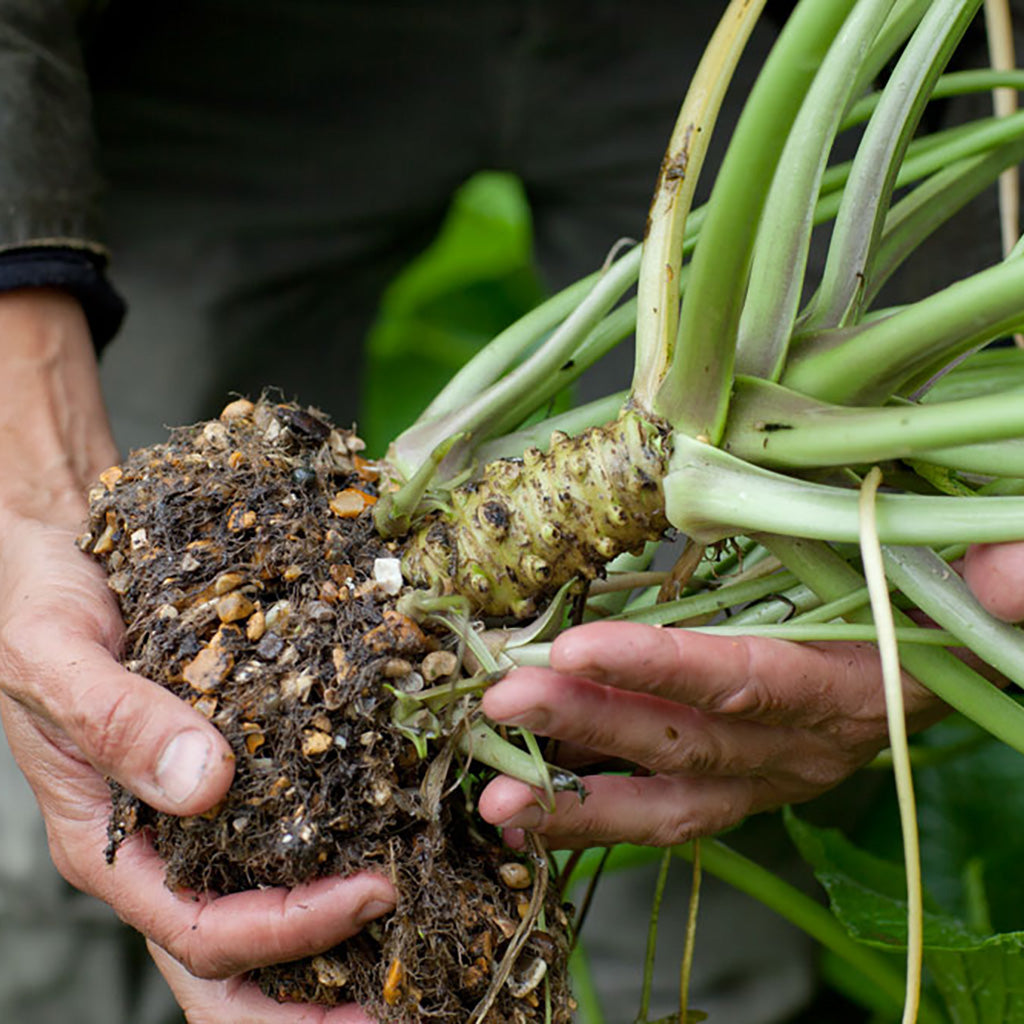
Grow Your Own Wasabi
Perfect for that shady spot in your garden

What you’ll need for wasabi plant growing
Even though wasabi isn’t native to the UK, you don’t need a particularly unusual setup to grow it. Here’s all you need:
- A wasabi plant (seasonally available on our website)
- A large container (at least 9 litres) or a shady, well-draining garden spot for planting out
- Moist, fertile soil or good quality compost
- Shade cloth if you don’t have a shaded spot
- Compost, manure or general-purpose fertiliser for feeding
- Straw or fleece for winter protection
- Scissors for pruning leaves
How to grow wasabi in the UK
Wasabi is thought of as tricky to grow, but once established it is a rewarding and surprisingly tough plant. It thrives in shady, moist spots where most other crops would struggle, and with a bit of patience, you'll be rewarded with the famously pungent rhizomes that make fresh wasabi paste a real treat. The plant grows up to 60cm tall and 1m wide, with large heart-shaped leaves making a lush feature in any garden corner that doesn't see much sun.
Start by potting your wasabi plant in a 9cm (3") container filled with compost to let it settle in and establish a good root structure.

Where to plant wasabi
After 4-5 weeks, your wasabi plant will be ready to move to a larger pot or into the ground. Growing your wasabi in a container is possible as long as the following conditions are met:
- The soil is kept moist but not waterlogged
- Nutrition is provided with a top dressing of compost or a general-purpose plant food
- You use a 9-litre pot as a minimum size
If you’re planting in the ground, remember that wasabi likes its soil like it likes its weather: cool, damp, and never soggy. The soil should be fertile and well draining, as although wasabi likes plenty of water, it won’t like to be sat in a puddle for extended periods!
Wasabi is accustomed to shady river banks high in the Japanese mountains, so it has evolved to survive in very low light levels. So much so, this plant will need protection from the summer sun with heavy shade.
With these requirements in mind, the following spots are all great places to plant wasabi:
- Under trees and over-hanging branches
- Behind or beside a tall shrub
- On the shaded side of a fence or wall
- Around the edge of a pond – provided shade is available
Plant your wasabi so that the crown of the plant is not covered but remains slightly above the soil. This will allow new leaves to emerge unhindered.

How to care for wasabi
Once established, wasabi is not unduly demanding, and pests and disease are unlikely to be a problem in a healthy plant. The occasional aphid or some mildew may be seen, but these are unlikely to threaten more than a few leaves. However, slugs will eat wasabi leaves, so should be deterred and removed.
Keep the soil moist and feed with a top dressing of compost, manure or a general-purpose plant food. If your shade is not sufficient in summer and you notice the leaves yellowing, provide more shade by growing a tall plant on the sunny side, or by fixing a piece of shade cloth above the wasabi. Wasabi loves its summers cloudy and cool, so if the weather is dull you can take solace in the fact the wasabi will be thriving!
Wasabi will survive temperatures down to -5ºC, but to protect it from those really cold nights, some straw or fleece covering the crown of the plant is a good idea.
Patience is a virtue with wasabi, and the reward of harvesting and grating your own fresh wasabi paste will be all the sweeter for the two years it can take to yield the famously pungent rhizomes.

How to prune wasabi
Pruning is simple: remove any yellowing or damaged leaves as they appear, especially in winter when the foliage dies back and energy travels down to the rhizomes that will be forming at the base of the stems. Come spring, your wasabi will put out new leaves with fresh vigour. Dead material can be cleared away to keep things tidy and stop slugs setting up home.
How to harvest wasabi
Wasabi takes its time – up to two years – but the wait is easily worth it (and that’s not just the bias talking). When the rhizomes are fattened and firm, gently pull the whole plant up, remove excess soil and wash. Grate only what you need, as fresh wasabi quickly loses its kick. You can also pick a few leaves and stems whilst waiting for the rhizome to be ready to add a peppery bite to salads. In March and April, long stems holding a cluster of delicately scented white flowers will appear, and you can harvest these flowers and fry them in tempura batter if you’re out to impress.
Several rhizomes weighing 100g and more will provide you with a bountiful and eye-watering harvest to share with friends over sushi, or incorporate in any of the delicious and original recipes we have created with an English twist. We think we hold the British record at 377g for a single rhizome – if anyone can beat that we would prefer you keep it to yourself and not break our hearts!
If you don’t want to wait two years, why not try our fresh wasabi starter kit? You’ll get a 50g rhizome, a stainless steel grater, a grater brush, and all the instructions you need to make fresh wasabi.
Wasabi (Wasabia japonica) is a plant native to Japan, prized for its spicy green paste made from the rhizome. Unlike imitation wasabi made from horseradish, real wasabi has a fresh, fragrant heat and subtle sweetness. Traditionally grown in Japan’s cool mountain streams, it’s now also cultivated in the UK by growers like The Wasabi Company.
Learn more about wasabi in our ‘What is wasabi?’ blog post.
The rhizome is the key part of the plant and what you're growing wasabi for. It’s a swollen stem, not a root, and it holds the plant’s stored nutrients to survive winter and regrow with vigour in spring. It grows just above the root system and is what you grate for fresh wasabi paste.
The difference between the two is that the roots are responsible for drawing in water and nutrients to help the plant (including the rhizome) grow, whereas the rhizome is the edible powerhouse of flavour that you use to make wasabi paste.
(It should be noted that the term rhizome is widely used, even in the Japanese literature, so we use it too. However, the correct botanical term for this part of the wasabi is in fact a stem. Similar to other brassicas like broccoli and Brussels sprouts, the wasabi stem is the central part of the plant that holds the leaves.)
Yes. Wasabi leaves, stems, and even wasabi flowers are edible. The flavour’s milder than the rhizome but still packs a wasabi-style punch. Use the leaves fresh in salads or pick a few stems for stir fries. Come early spring, the small white flowers are great raw or battered and fried. Just take a few at a time and let the plant keep growing strong.
Yes, wasabi can grow indoors if you provide the right conditions. It needs a cool, shady spot with plenty of humidity and consistently moist soil. A bright room without direct sunlight or a shaded greenhouse works well. Just make sure to keep the soil damp and avoid overheating.
Wasabi likes its soil to be moist but not waterlogged. You will need to water it regularly, especially if it’s in a container, to keep the roots happy. If planted outside in a suitable shady spot with good soil, nature often does the job, but in dry spells, watering is essential.
Yes, wasabi can be propagated by dividing mature plants, usually when you re-pot or harvest.
Mature wasabi plants produce side shoots called plantlets along the rhizome. You can separate these as long as they have some root attached and replant them individually.
You can't take cuttings from wasabi. To propagate wasabi, you would need a mature side shoot that has its own roots that can establish in the soil.
Keep rhizomes refrigerated but dry in an unsealed plastic bag.
If you want to freeze leftover wasabi, grate it to a paste, wrap in cling film and freeze immediately. When you are ready to use, allow it to defrost, mix and serve. Whole rhizomes do not freeze well as they lose flavour and pungency.
Most store-bought “wasabi” is actually a mix of horseradish, mustard, and green colouring because real wasabi is expensive and tricky to grow. Fresh wasabi has a more delicate, complex flavour that fades quickly after grating, while the fake stuff has a harsher, more one-dimensional heat that lasts longer.

